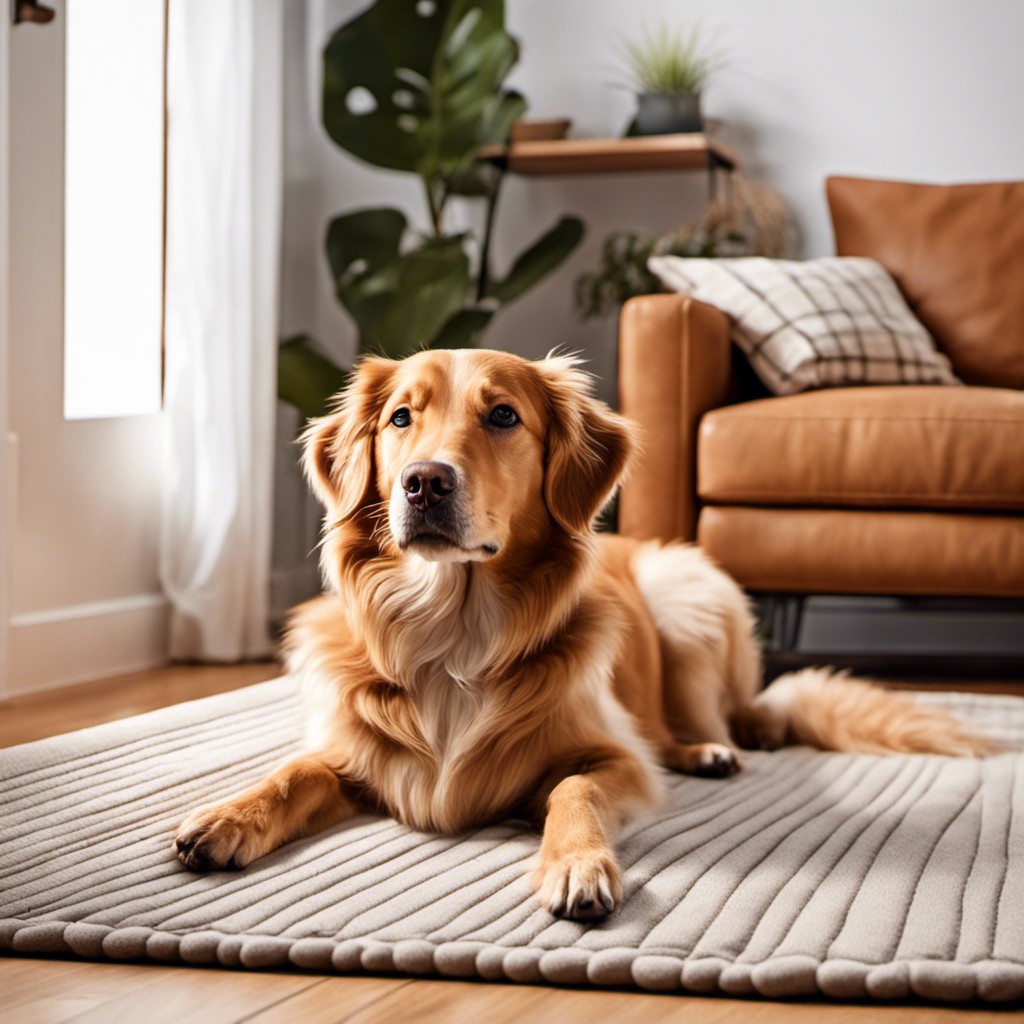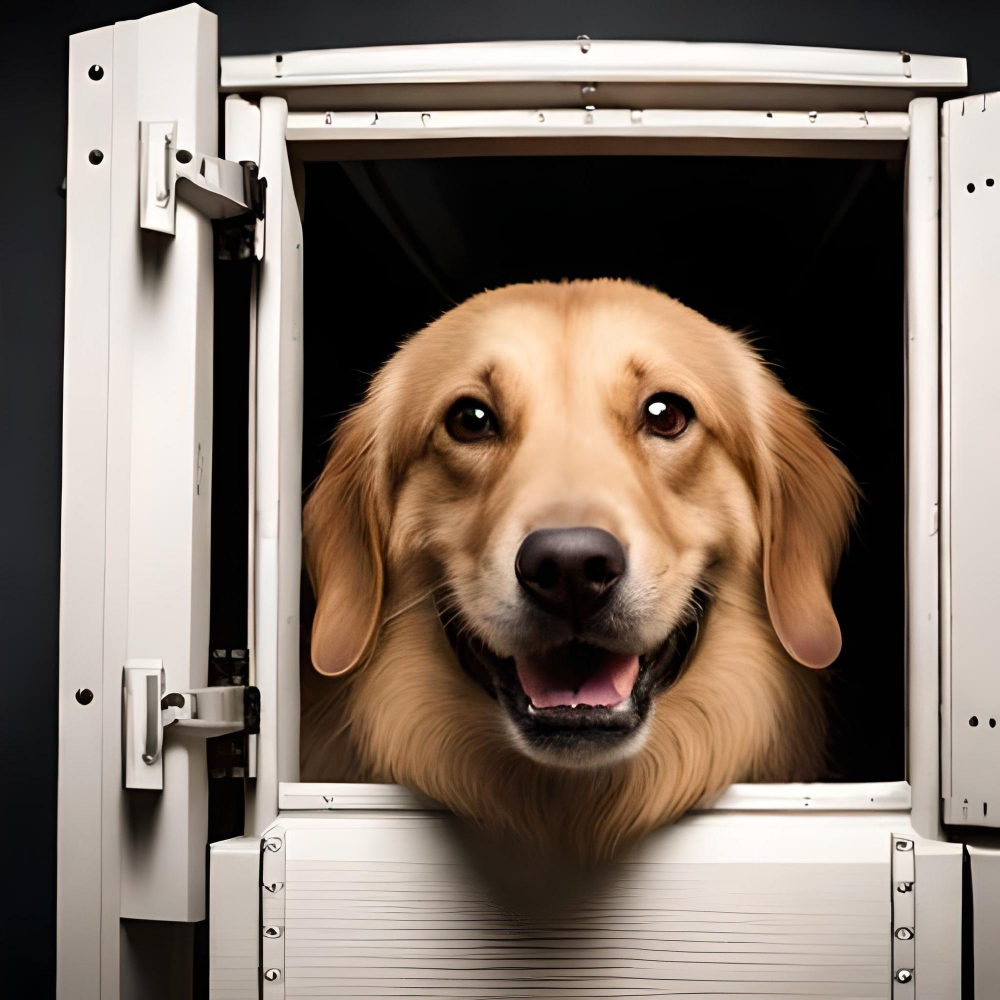Last updated on
Discover a variety of creative and effective alternatives to crate rest that can keep your furry friend engaged, safe, and comfortable during their healing process.
As a pet owner, one of the hardest things to witness is watching your furry friend go through an injury or surgery that requires crate rest. While it may be necessary for their recovery, it can also be difficult to keep them confined and entertained in such a small space.
But what if there were alternatives to traditional crate rest? In this article, we will explore some creative ways to help your pet heal and stay comfortable without the need for constant confinement. Say goodbye to the boredom and frustration of crate rest and hello to new options for your beloved companion’s recovery.
Importance of Crate Rest Alternatives
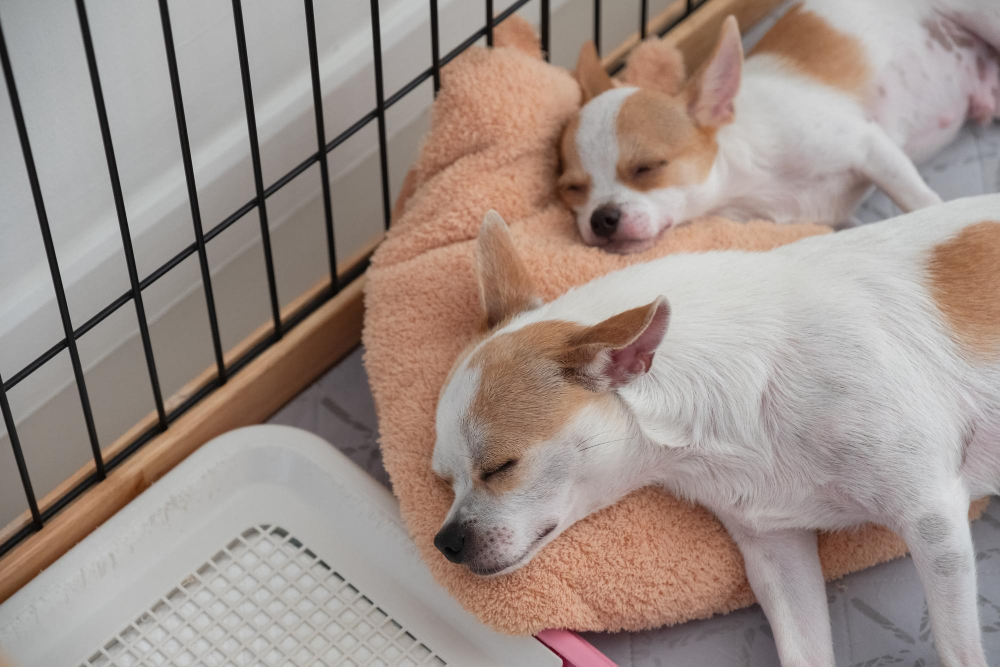
While crate rest may be necessary for some pets, it is not always the best option. In fact, prolonged confinement can lead to boredom, anxiety and even depression in animals.
That’s why finding alternatives to traditional crate rest is so important.
By providing your pet with a variety of safe and stimulating activities during their recovery period, you can help them maintain their physical and mental health while they heal. This will also make the process more manageable for both you and your furry friend.
In addition to keeping your pet entertained during this time, alternative methods of confinement or restriction can also provide additional benefits such as increased socialization opportunities or improved mobility through physical therapy exercises.
Pet-Proofing Your Home
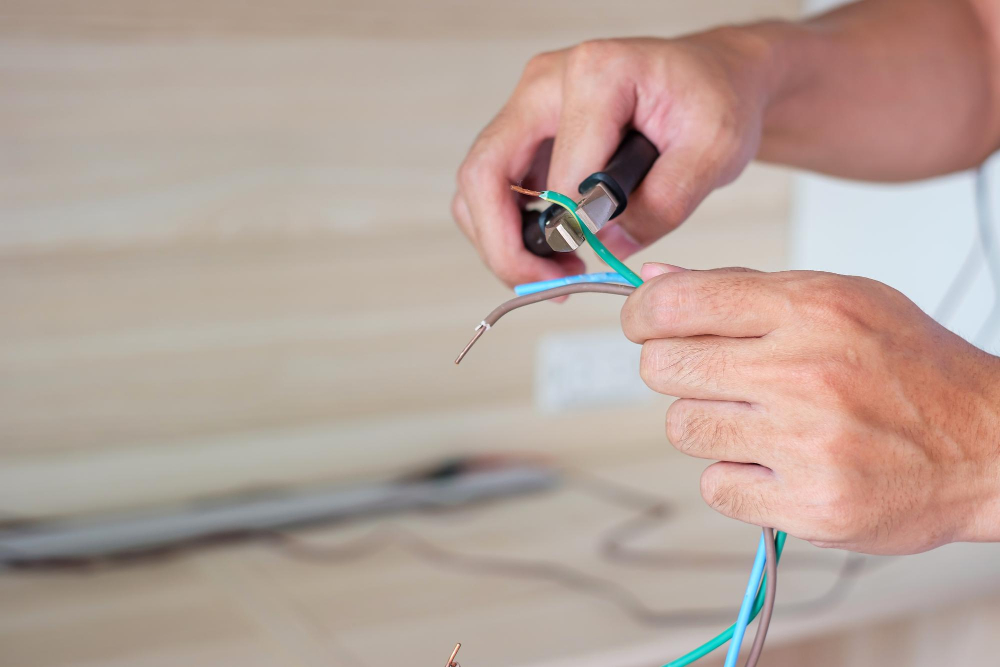
Pet-proofing your home can help prevent accidents and injuries while allowing them the freedom they need during their recovery.
Start by identifying potential hazards such as loose wires, sharp objects, toxic plants or chemicals. Keep these items out of reach or in a secured area where pets cannot access them.
You may also want to consider using baby gates or indoor dog barriers to restrict access to certain areas of the house.
Another essential aspect of pet-proofing is ensuring that all doors and windows are securely closed at all times. This will prevent any escape attempts which could lead to further injury or delay in healing time.
Creating Safe Environments
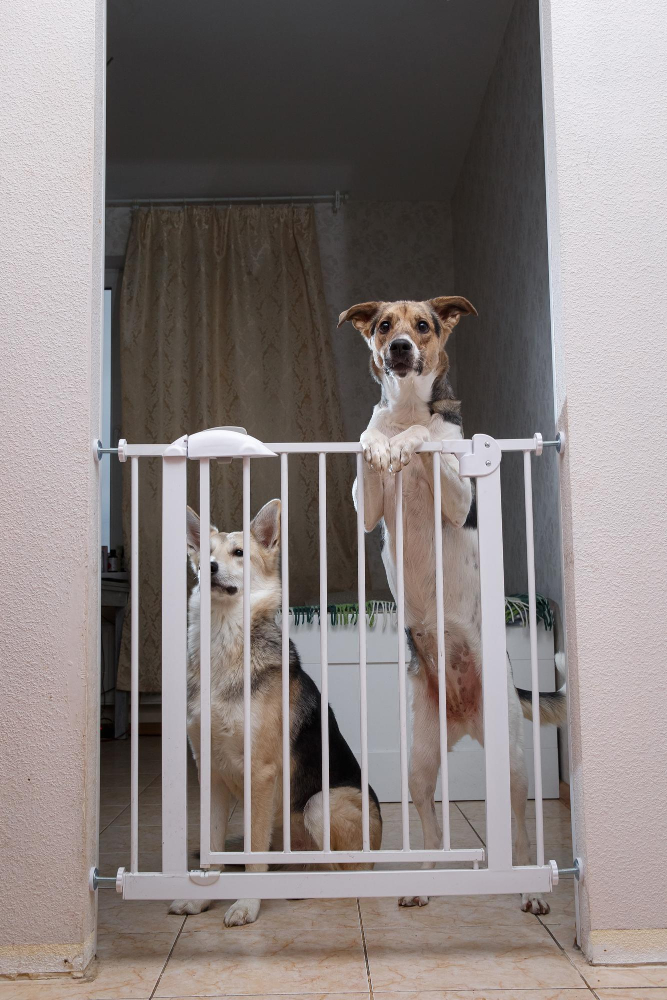
This means taking steps to ensure that they cannot access areas of the house where they may be at risk of further injury or harm. One way to do this is by using baby gates or indoor dog barriers, which can help keep your pet confined while still allowing them some freedom and mobility.
Another option is modifying their living space with playpens and barriers that provide enough room for movement but limit access to dangerous areas such as stairs or sharp objects. It’s important not only to consider physical safety but also mental stimulation during recovery periods.
By providing puzzle toys, slow feeders, and other mentally stimulating activities in their designated area you can help reduce boredom and anxiety levels while keeping them entertained without risking re-injury.
Use of Playpens and Barriers
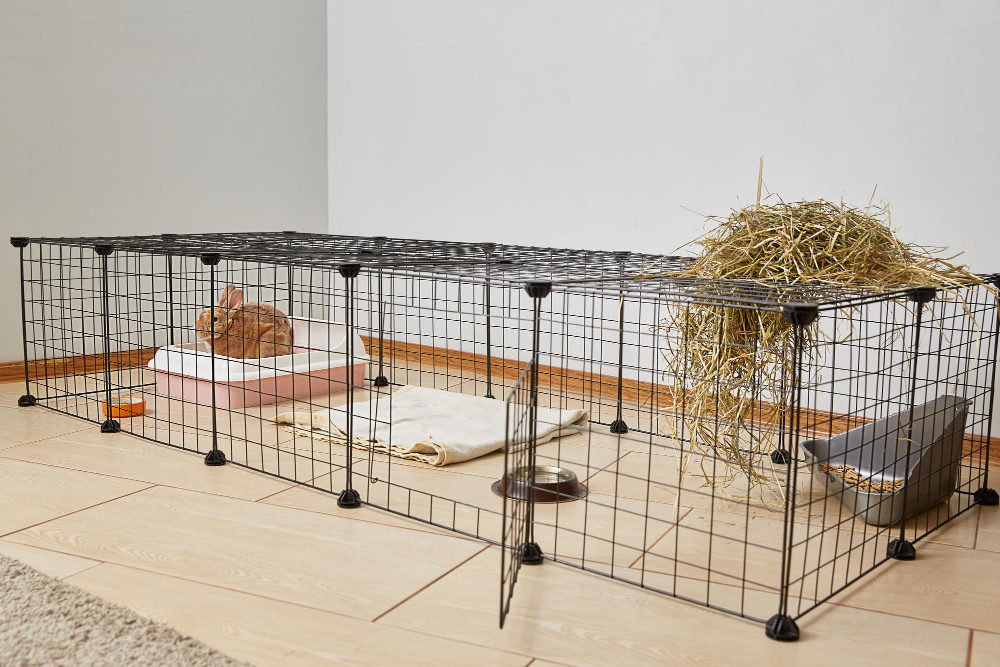
These can be used indoors or outdoors, depending on your needs. Playpens come in various sizes and shapes, making it easy to find one that fits the size of your pet and the available space in your home.
Barriers such as baby gates or indoor dog gates can also be used to restrict access to certain areas of the house where you don’t want them going. This is especially useful if you have other pets or children who may accidentally bump into them while they’re healing.
When using playpens or barriers, make sure they are secure enough so that there’s no chance of escape but not too tight that it causes discomfort for your furry friend. You should also ensure there’s plenty of room for water bowls, food dishes, toys and bedding inside.
Playpen Solutions

Playpens are larger than crates, providing more space for your pet to move around and stretch their legs. They also allow you to create a safe environment that can be customized according to your pet’s needs.
When choosing a playpen, make sure it is sturdy and secure enough for your furry friend. You don’t want them escaping or getting injured while trying to break free from the pen.
You can use various materials such as plastic, metal or fabric-based pens depending on what suits you best. Some even come with doors that allow easy access in and out of the pen without having to lift up any sides.
With this option, you can add toys or blankets inside the playpen so they have something comfortable and familiar during their recovery period.
Exercise Pen Options
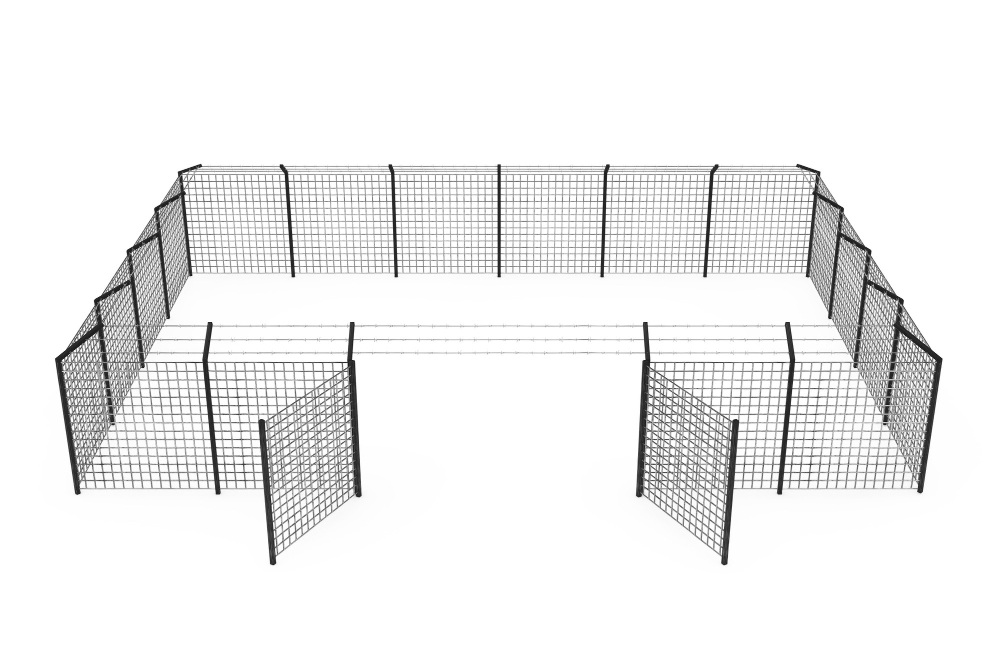
These pens are larger than traditional crates and provide more space for your pet to move around in. They come in a variety of sizes, materials, and shapes, making it easy to find one that fits your pet’s needs.
When choosing an exercise pen, make sure it is sturdy enough for your pet’s size and strength. Look for pens with secure latches or locking mechanisms that will prevent escape attempts.
You can also customize the inside of the pen by adding comfortable bedding or toys to keep them entertained while they heal. Exercise pens are great options because they allow pets more freedom without compromising their safety during recovery.
Baby Gates for Safety
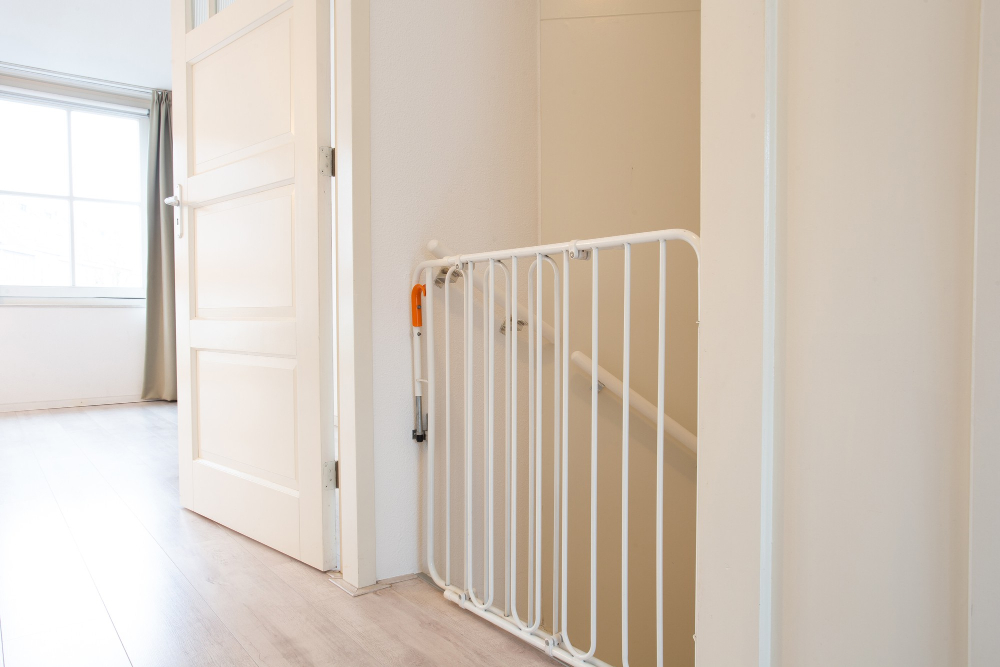
These gates are designed to prevent children from accessing certain areas of the house and can also work well as barriers for pets. They come in various sizes and styles, including pressure-mounted or hardware-mounted options.
When using baby gates as an alternative to crate rest, it’s essential to choose one that is sturdy enough not to be knocked over by larger dogs or pushed aside by determined pups. You should also ensure that the gate has no gaps where small paws could get stuck.
By setting up a safe space with baby gates around your home, you give your furry friend more room than they would have inside their crate while still keeping them confined and secure during their recovery period. This option allows them more freedom of movement while preventing any further injury or damage caused by excessive activity.
There are many alternatives available when it comes time for crate rest after surgery or injury; however, each method must be carefully considered based on individual needs and circumstances before implementation.
Indoor Dog Barriers
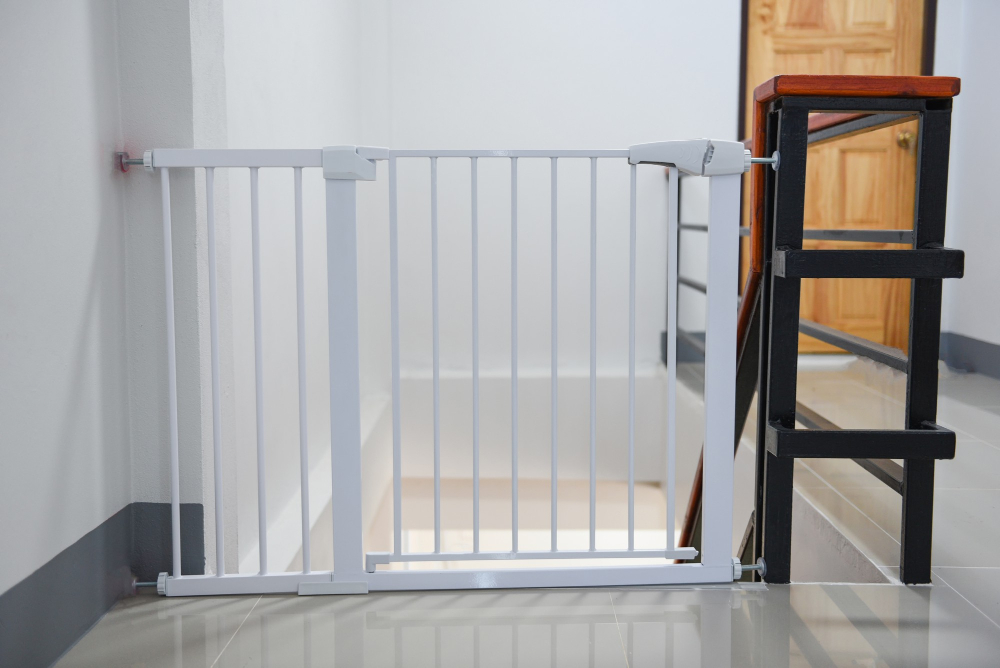
These barriers can be used to create safe zones within your home where your pet can move around freely without the risk of further injury or damage. They come in various sizes and materials, including metal gates and plastic panels that attach together.
When using indoor dog barriers as an alternative to crate rest, it’s important to ensure they are sturdy enough for your pet’s size and strength. You should also make sure there is plenty of room for them to move around comfortably while still being restricted from areas where they could cause harm or re-injure themselves.
Some popular options include pressure-mounted gates that require no drilling or installation, freestanding playpens with adjustable panels for customization, and modular systems with interchangeable parts so you can create different configurations depending on your needs.
Indoor dog barriers provide a flexible solution for keeping pets contained during their recovery period while allowing them some freedom of movement within designated spaces.
Modified Crate Rest
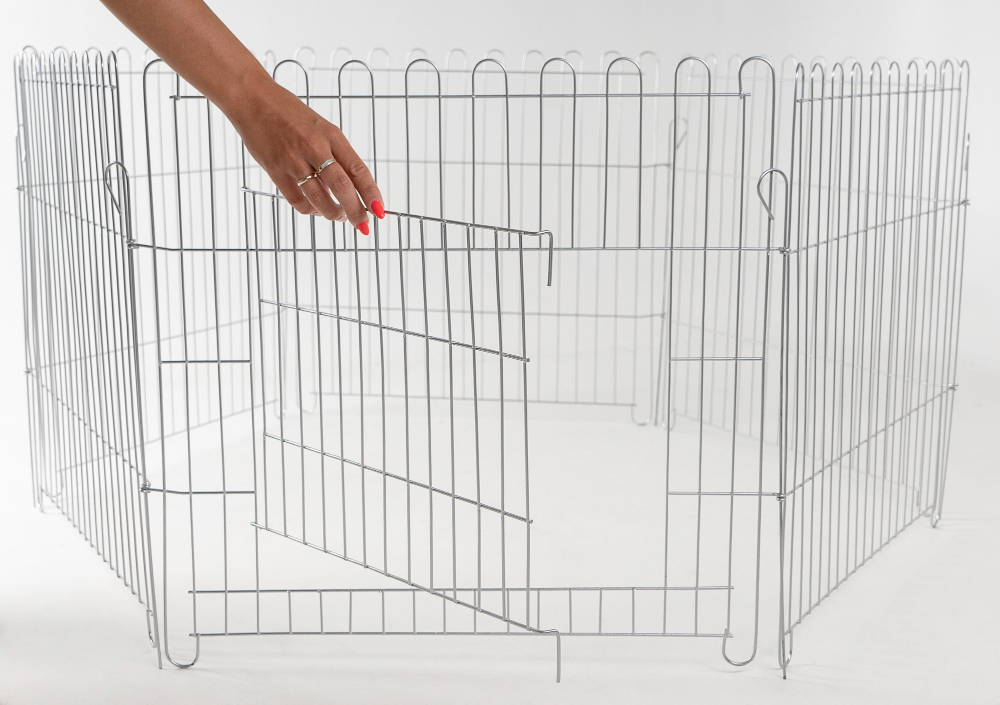
There are ways to modify the crate and make it more comfortable for your pet during their recovery process. One way is by using a larger crate that allows them to move around more freely while still limiting their activity level.
Another option is adding soft bedding and toys inside the crate, which can help keep them calm and entertained. You can also cover the top of the crate with a blanket or towel to create a cozy den-like environment.
If your pet has trouble settling down in their modified crate, you may want to consider using calming aids such as pheromone sprays or diffusers that release natural scents designed specifically for pets’ relaxation.
Activity Restriction Techniques
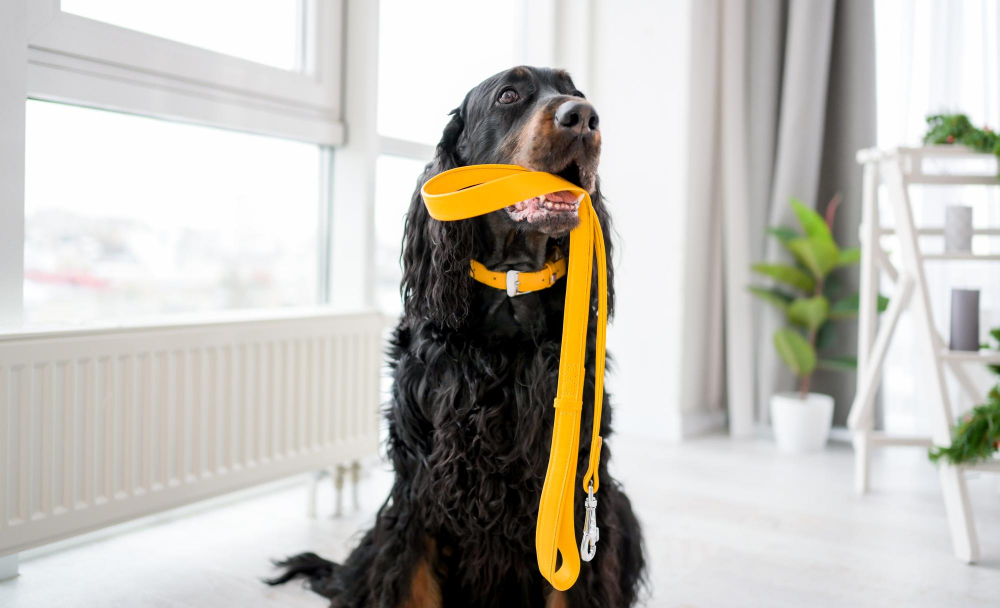
This doesn’t mean that they have to be completely sedentary during their recovery period. There are several techniques you can use to restrict their activity while still allowing them some freedom and stimulation.
One technique is using a leash indoors. This allows you to control where your pet goes and how much exercise they get without confining them in a crate or small space.
You can also use baby gates or indoor dog barriers to limit access to certain areas of the house.
Another option is modified exercise routines that take into account your pet’s specific needs and limitations during recovery. For example, if your dog has had surgery on one leg, you may need to focus on exercises that strengthen the other three legs while avoiding any activities that put too much strain on the injured limb.
It’s important not only for physical health but also mental well-being of pets who are recovering from injuries/surgeries as boredom could lead them towards depression which would slow down their healing process even more.
Training Strategies for Resting
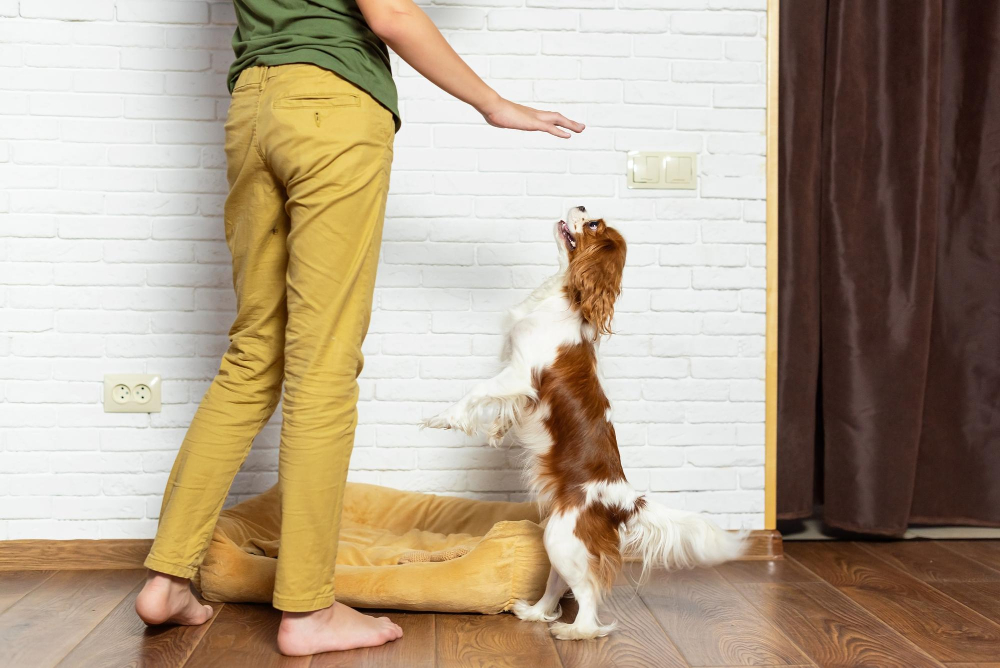
This can be especially difficult if your pet is used to being active or has a lot of energy. However, with some training strategies, you can help your pet learn how to relax and rest during their recovery period.
Start by teaching them basic commands such as “stay” or “settle.” These commands will come in handy when you need them to stay put while you attend to other things around the house. You can also use positive reinforcement techniques like treats or praise for good behavior.
Another helpful strategy is desensitization training. This involves gradually exposing your pet to situations that may cause anxiety or excitement so they become more comfortable with them over time.
For example, if your dog gets excited every time someone knocks on the door, practice having someone knock softly at first and reward calm behavior before increasing intensity.
Remember that patience and consistency are key when it comes to training strategies for resting.
Modified Exercise Options
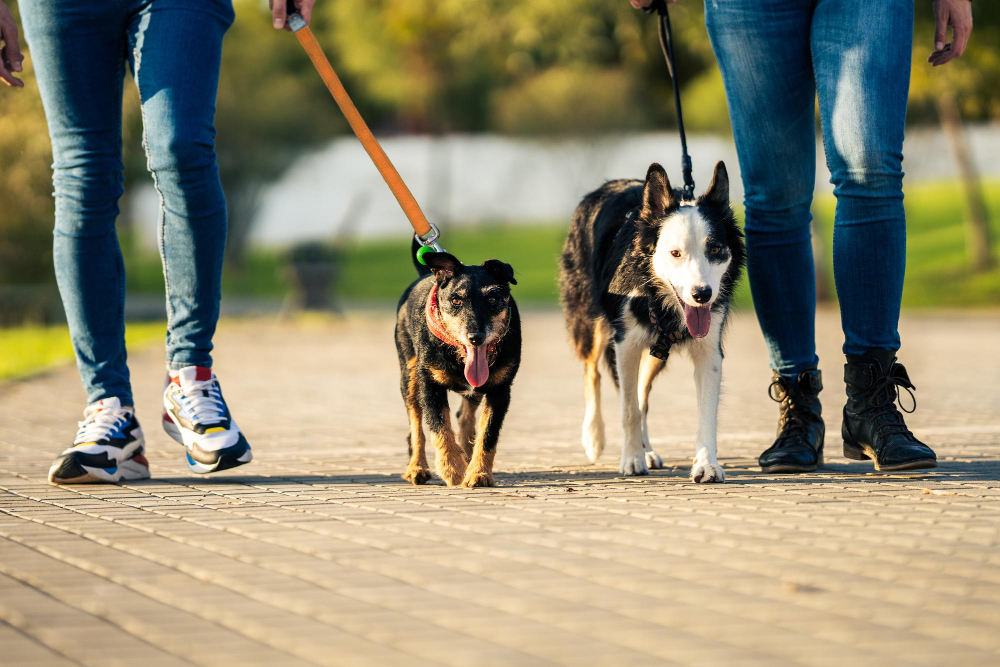
One option is slow and controlled leash walking, which allows them to get some fresh air and light exercise without overexerting themselves. Another alternative is using a treadmill designed for pets that allows you to control the speed and duration of their workout.
Swimming or hydrotherapy can also be an excellent way for your furry friend to stay active during recovery as it provides low-impact exercise that doesn’t put pressure on joints or muscles. However, before starting any new form of physical activity with your pet during their healing process, make sure you consult with a veterinarian first.
Remember that every animal’s needs are different when recovering from an injury or surgery; therefore, always follow the advice given by medical professionals regarding what activities they should avoid and what exercises will benefit them most in terms of rehabilitation.
Benefits of Leash Walking
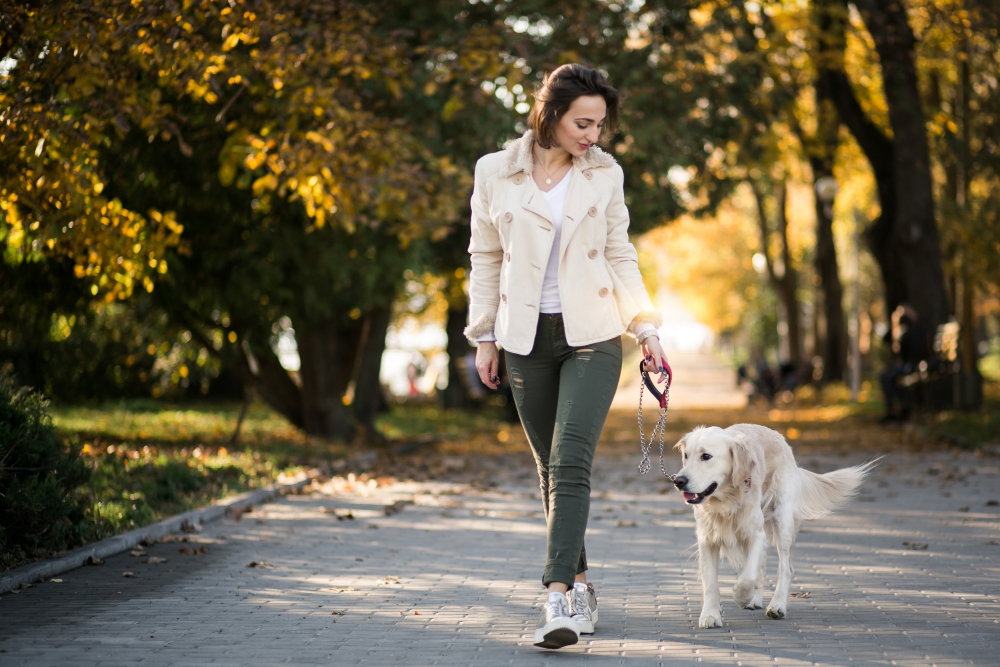
Walking on a leash provides physical exercise, mental stimulation, and socialization opportunities that can help your furry friend heal faster and feel better. It also allows them to explore the outside world while still being under your control.
However, it’s important to keep in mind that not all injuries or surgeries are suitable for leash walking. Always consult with your veterinarian before starting any new activity with your pet.
If approved by the vet, start slow and gradually increase the duration of walks as well as distance covered over time. Use a comfortable harness instead of just attaching the leash directly onto their collar which could cause strain on their necks.
Mental Stimulation Ideas

Mental stimulation can help reduce boredom and anxiety while promoting healing. There are many ways to provide mental stimulation for your furry friend, even when they’re confined to a small space.
One option is puzzle toys or slow feeders that require problem-solving skills and encourage natural behaviors like foraging. These types of toys can be filled with treats or kibble, which will keep them occupied for longer periods.
Another way to stimulate the mind is through training exercises such as teaching new commands or tricks that don’t require physical activity but still challenge the brain. You could also try scent work games where you hide treats around the room and let them sniff out their rewards.
Supervised socializing with other pets in a controlled environment can also provide mental stimulation while preventing overexertion during playtime.
Puzzle Toys and Slow Feeders
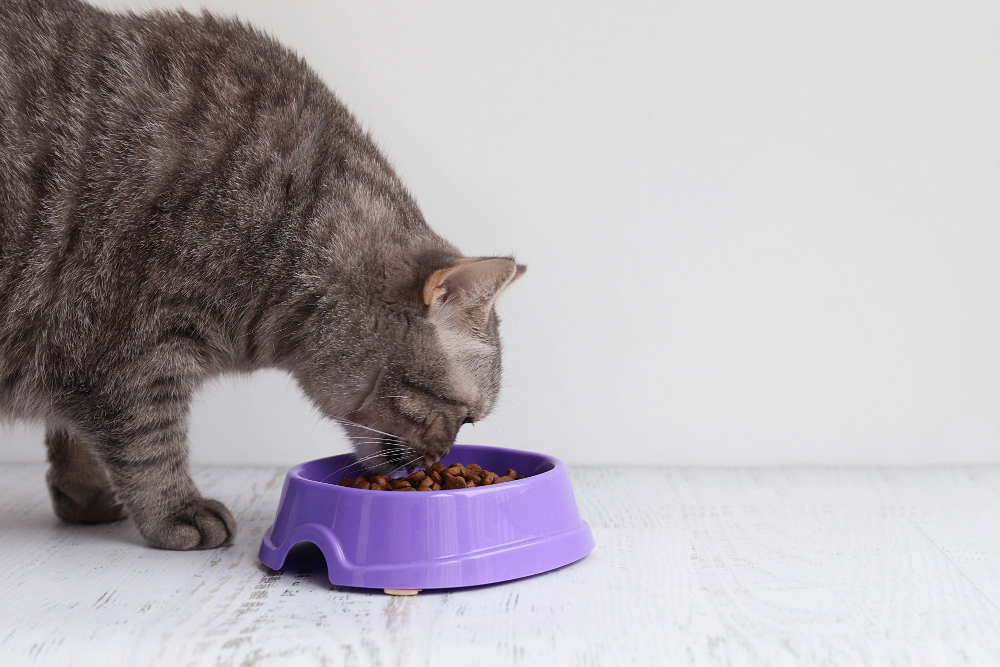
These toys can help reduce boredom, anxiety, and destructive behavior that may arise from being confined for long periods. Puzzle toys come in various shapes and sizes, with different levels of difficulty to challenge your pet’s problem-solving skills.
Slow feeders are another excellent option for pets who need to rest but still enjoy their meals. These feeders dispense food at a slower pace than traditional bowls, which can help prevent digestive issues such as bloating or vomiting.
When choosing puzzle toys or slow feeders for your furry friend during their recovery period, it is essential to consider the type of toy that best suits their needs. Some dogs prefer interactive puzzles where they have to manipulate objects with their paws or nose; others may enjoy treat-dispensing balls that require rolling around on the floor.
Supervised Socializing
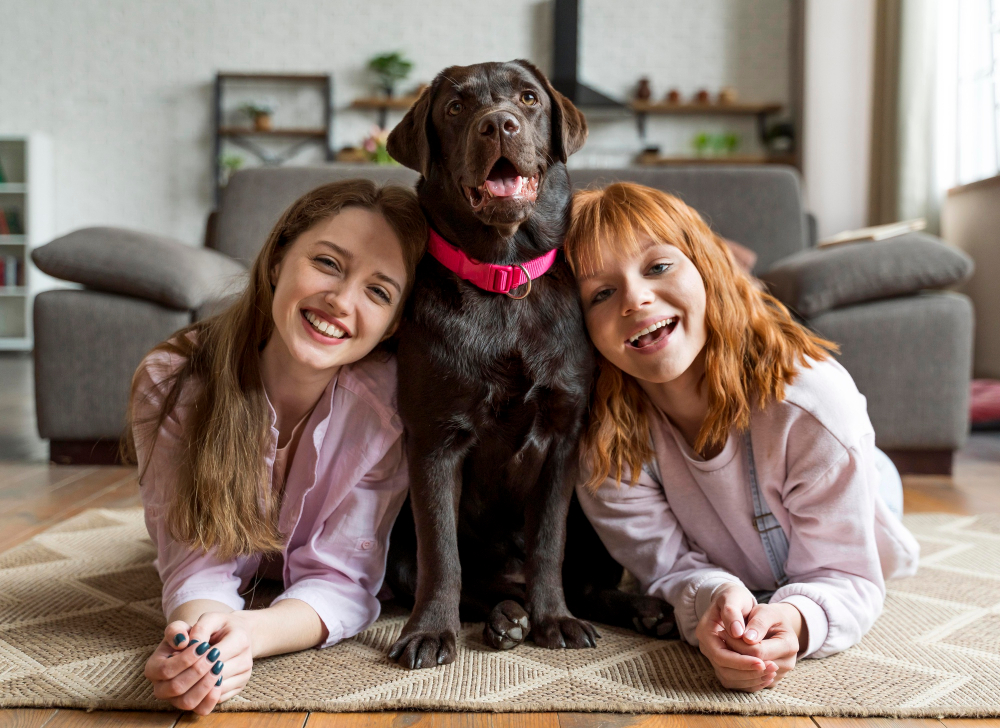
Socialization is still an essential part of their well-being. To help your furry friend stay mentally stimulated and socially engaged during the healing process, consider supervised socializing.
This can include inviting a few trusted friends or family members over for short visits with your pet or taking them on brief outings to low-stress environments like a quiet park or outdoor café. Always make sure that any interactions are closely monitored and that other animals are up-to-date on vaccinations before allowing contact.
Socialization not only helps prevent boredom but also promotes positive behavior in pets by providing opportunities for mental stimulation and exercise while reducing stress levels. Just remember to take things slow at first until you’re confident that they’re ready for more extended periods of interaction.
Physical Therapy Options
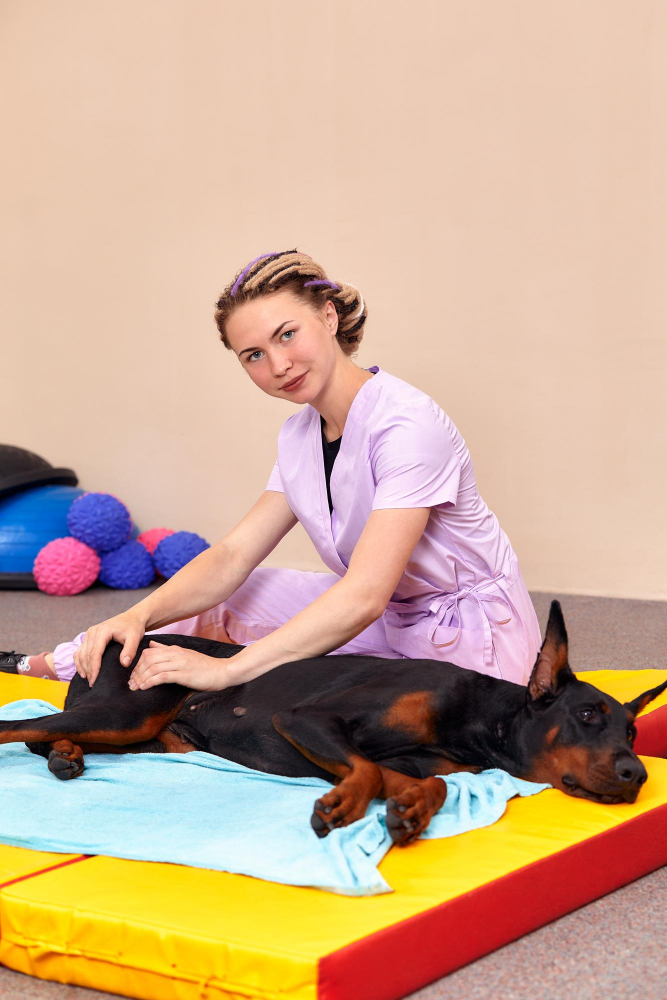
It can help improve their mobility, reduce pain and inflammation, and prevent further complications. Some physical therapy options include hydrotherapy, massage therapy, stretching exercises, and range-of-motion activities.
Hydrotherapy involves using water to provide resistance while exercising. This type of physical therapy is particularly beneficial for dogs with joint problems or those recovering from orthopedic surgeries as it reduces stress on joints while still providing a challenging workout.
Massage therapy helps increase circulation in the affected area by stimulating blood flow to promote healing. It also helps relax muscles that may be tense due to injury or surgery.
Stretching exercises are designed to improve flexibility in your pet’s muscles and joints after periods of rest during crate rest alternatives. These types of activities should only be performed under veterinary supervision as they can cause further damage if not done correctly.
Range-of-motion activities involve moving your pet’s limbs through their full range of motion without causing any discomfort or pain; this will help maintain muscle tone during periods when exercise is limited.
Hydrotherapy for Recovery
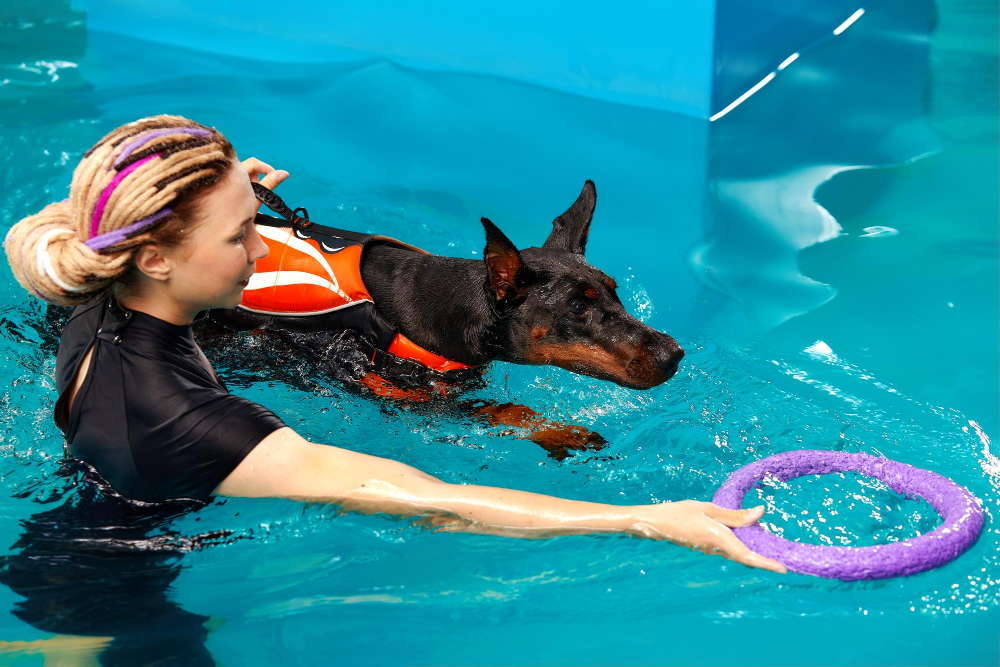
This therapy involves using water to help your pet regain strength and mobility without putting too much stress on their joints. Hydrotherapy can be done in a pool, underwater treadmill, or even just with a hose in the backyard.
The buoyancy of the water helps support your pet’s weight while they exercise, reducing pressure on their joints and allowing them to move more freely than they would be able to on land. The resistance of the water also provides an excellent workout for muscles that may have weakened during recovery.
In addition to physical benefits, hydrotherapy can also provide mental stimulation for pets who are used to being active but are now restricted due to injury or surgery. It gives them something new and exciting while still promoting healing.
It’s important that you consult with your veterinarian before starting any hydrotherapy program as it may not be suitable for all pets depending on their condition. A professional therapist should oversee each session so that proper techniques are used and progress is monitored closely.
Calming Techniques
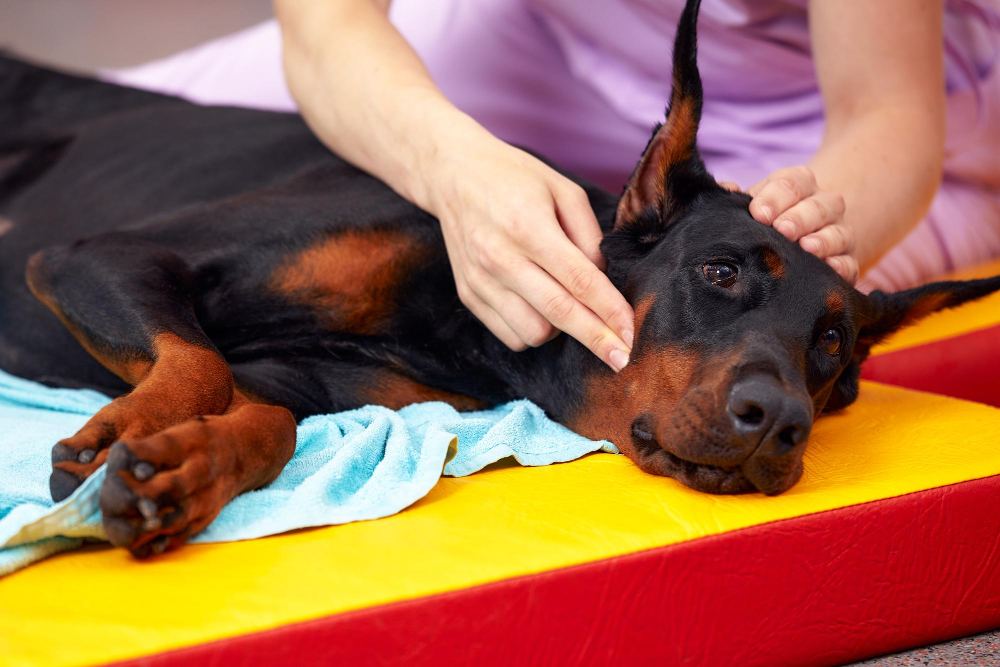
Stress can slow down the healing process and make it harder for your furry friend to recover. Fortunately, there are several calming techniques that you can use to help soothe your pet during this time.
One of the most effective ways to calm a stressed-out pet is through massage therapy. Massage helps reduce muscle tension, increase circulation, and promote relaxation in both humans and animals alike.
You can learn basic massage techniques from a veterinarian or animal therapist.
Another way to help ease anxiety in pets is through aromatherapy using essential oils such as lavender oil which has been shown by research studies that its scent reduces stress levels in dogs.
Music therapy also works wonders when trying to create a relaxing environment for pets undergoing recovery periods; playing soft music with soothing sounds like nature sounds or classical music will have positive effects on their mood.
Lastly, consider investing in pheromone diffusers such as Adaptil (for dogs) or Feliway (for cats). These products release synthetic versions of natural pheromones that mimic those produced by nursing mothers which have been proven effective at reducing anxiety levels among pets during stressful situations like crate rest recovery periods.
Pain Management
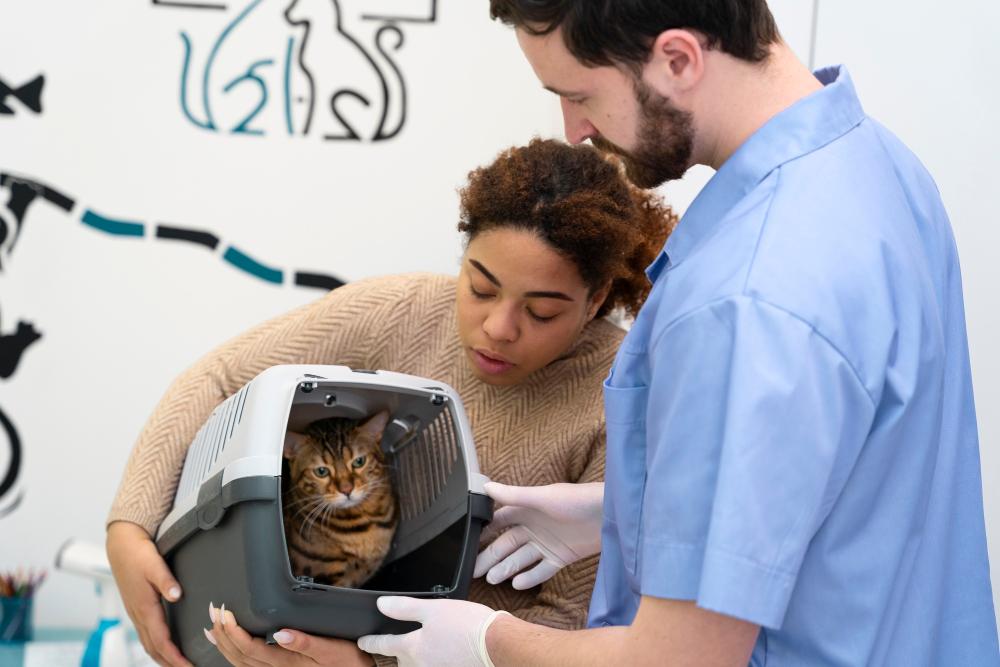
It can be challenging to determine if your furry friend is in pain, as they may not always show obvious signs. However, it’s crucial to monitor their behavior and look for any changes that could indicate discomfort or distress.
If you suspect that your pet is experiencing pain, consult with a veterinarian immediately. They can recommend appropriate medication or other forms of treatment to help manage the pain effectively.
It’s important to follow the prescribed dosage and administration instructions carefully when administering medication at home. Overdosing on medications intended for humans or giving them inappropriate drugs can cause serious harm and even death in pets.
In addition to medication, there are also alternative therapies available such as acupuncture and massage therapy that may provide relief from chronic pain conditions like arthritis.
When to Consult a Veterinarian
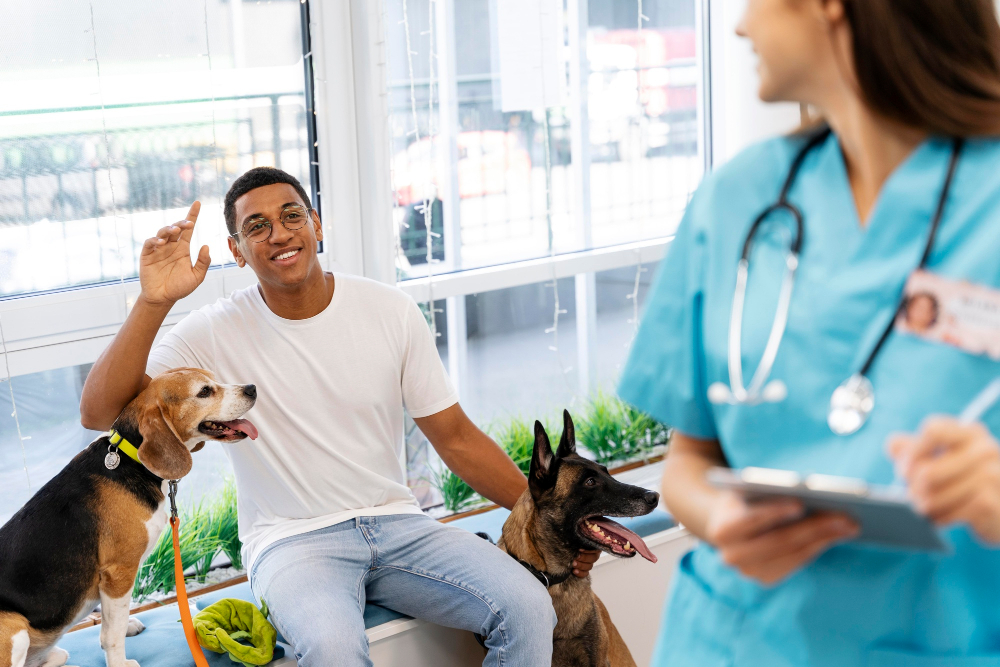
It is crucial to consult with your veterinarian before implementing any of these methods. Your vet will assess your pet’s specific needs and recommend the best course of action for their recovery.
If you notice any changes in your pet’s behavior or physical condition during their healing process, it is essential to contact a veterinarian immediately. Signs such as excessive panting, lethargy, loss of appetite or vomiting could indicate complications that require medical attention.
Remember that crate rest alternatives are meant to supplement traditional treatment options and should never replace them entirely without consulting a professional first. By working closely with your vet and exploring different options together, you can help ensure a safe and speedy recovery for your furry friend while keeping them comfortable throughout the process.
FAQ
What can I do instead of crate training?
Alternative to crate training: Utilize designated doggie rooms, playpens, baby gates, or doggie daycare facilities, while maintaining consistency in your training approach.
What can I give my dog on crate rest?
You can give your dog food-dispensing toys, like durable chew toys filled with kibble or treat pockets, and maze or puzzle-type toys that double as feeders during crate rest.
How do I get my puppy to sleep without a crate?
To get your puppy to sleep without a crate, provide a soft, warm, safe bed with a playpen or barrier around it to encourage a sleeping routine and prevent wandering or unwanted behaviors.
How do you survive crate rest?
To survive crate rest, establish a consistent daily routine for your recovering dog that includes toilet breaks, feeding times, quality time together, designated rest periods, and rewarding good behavior with praise and small food treats, while ensuring they are either carried or on a lead when outside the crate or pen.
What are the benefits of using playpens or exercise pens as an alternative to crate rest?
Playpens or exercise pens provide dogs with a larger space, enabling them to move more freely, while still maintaining their safety and confinement compared to traditional crate rest.
How can I effectively use baby gates to create a restricted, safe space for my dog instead of using a crate?
To effectively use baby gates to create a restricted, safe space for your dog instead of using a crate, set up the gates to block off an area or room that meets your dog’s needs and provides a comfortable, secure environment.
In what ways can I make a designated dog-safe room as a substitute for crate rest?
To create a designated dog-safe room as a substitute for crate rest, ensure the room is free from potential hazards, has a comfortable bed, toys, and access to food and water.
Recap
Liked this article? Here's what you can read next:
